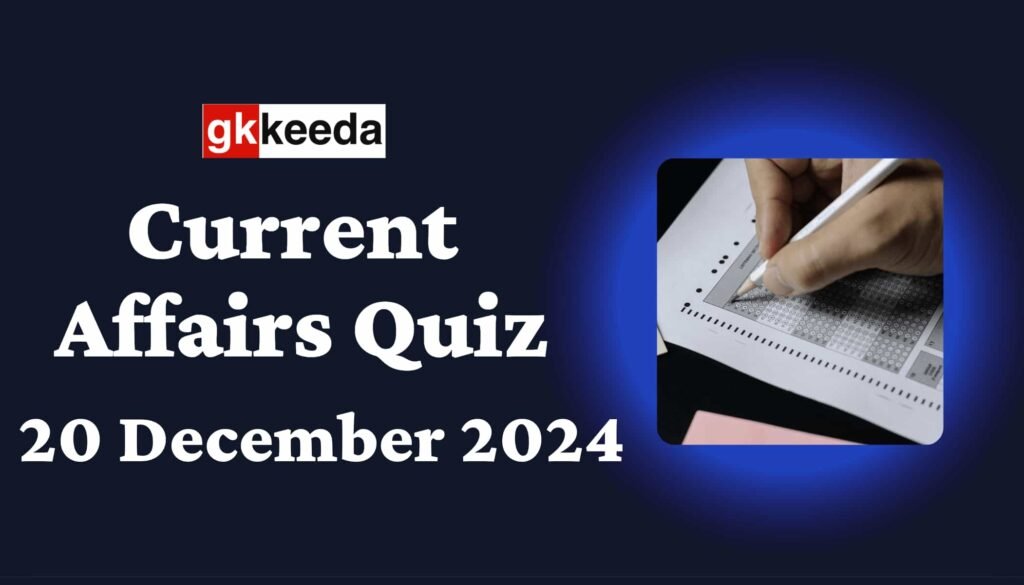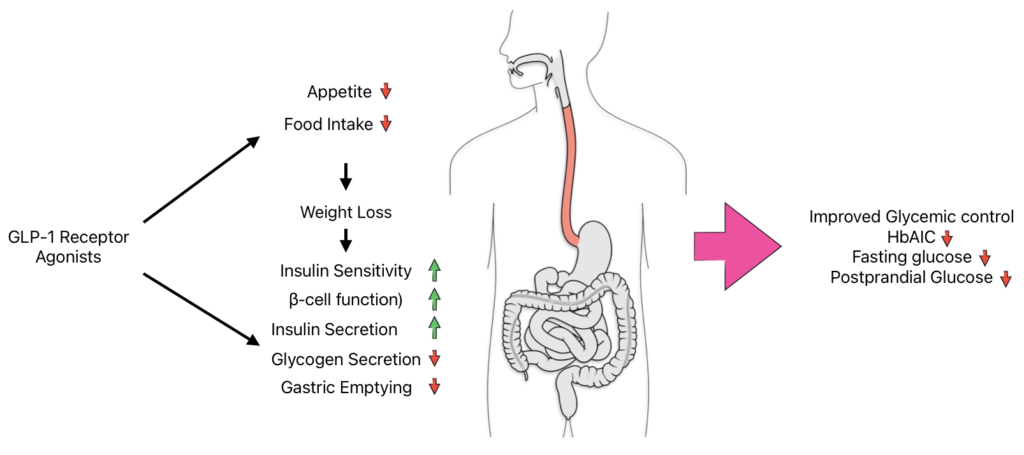Current Affairs Quiz 20 December 2024

Are you looking for a current affairs quiz with answers that cover all the important daily topics from an exam perspective, such as UPSC Prelims Current Affairs, SSC CGL, and more? If so, you’ve come to the right place!
This article contains MCQ related to recent current affairs questions. You can try it as a UPSC daily quiz.
We try to cover all the sources like Vision IAS Daily Current Affairs, and newspapers like Indian Express, The Hindu, The Economic Times, etc.
Topics covered in Today’s Current Affairs Quiz
Q1. Consider the following statements regarding Hydrothermal vent:
(1). These are underwater springs where cold water near the seabed comes in contact with magma in the tectonically active regions.
(2). It is rich in trace metals, gases, and minerals.
(3). They are generally found in the global mid-ocean ridge system.
Which of the following statements given above is/are correct?
(A). 1 & 2 Only
(B). 1 & 3 Only
(C). 2 & 3 Only
(D). 1, 2 & 3
Show Answer
Correct Answer: (D)
Explanation:-
Context: Recently, under the Hydrothermal Exploration Program carried out by NCPOR (National Centre for Polar and Ocean Research), oceanographers captured an active hydrothermal vent located 4500m below the surface of the Indian Ocean.
What are Hydrothermal Vents?
- These are underwater springs where cold water in the ocean near the seabed contacts magma in tectonically active regions.
- It trickles through cracks and fissures in ocean crust and mixes with magma, gets heated up, and dissolves minerals from surrounding rocks.
- Also called Geo-Thermal Vents/ Deep Ocean Vents/ Deep Sea Vents.
Why are Hydrothermal Vents important?
- Deep sea Hydrothermal Vents support diverse ecosystems and microbial communities, acting as the foundation for the food web.
- It provides insights into the origin of life on Earth.
Where are Hydrothermal Vents found?
- Geothermal vents found near the seabed.

Q2. Consider the following statements regarding Parliamentary Standing Committees:
(1). There are a total of 24 Parliamentary Standing Committees.
(2). They are constituted once in 5 years.
(3). Out of a total of 24 committees, 15 are serviced by the Lok Sabha Secretariat and 9 by the Rajya Sabha Secretariat.
(4). Each committee consists of 31 members – 21 from the Lok Sabha and 10 from Rajya Sabha, nominated by the Speaker and Chairman of Parliament.
Which of the following statements given above is/are correct?
(A). 1, 3 & 4 Only
(B). 1, 2 & 4 Only
(C). 1 & 4 Only
(D). 1, 2, 3 & 4
Show Answer
Correct Answer: (C)
Explanation:-
Context: Recently, the Parliamentary Standing Committee on Social Justice and Empowerment published a report on the consideration of Demand for Grants.
What is the Parliamentary Standing Committee?
- These are Parliamentary Committees appointed or elected by the house or nominated by the Speaker/ Chairman.
From which Article of the Indian Constitution, do they draw their authority?
- Article 105 deals with the privileges of MPs and Article 118 empowers the parliament to make rules to regulate its procedure and conduct of business.
How many Parliamentary Standing Committees are there?
- There are total 24 Parliamentary Standing Committees. 16 are serviced by Lok Sabha Secretariat and 8 by Rajya Sabha Secretariat.
How many members in each Parliamentary Standing Committee?
- Each has 31 members – 21 from Lok Sabha and 10 from Rajya Sabha.
Q3. Nexus Assessment Report also known as Assessment Report on Interlinkages Among Biodiversity, Water, Food and Health released by
(A). Intergovernmental Platform on Biodiversity and Ecosystem Services (IPBES)
(B). United Nations Environment Programme (UNEP)
(C). Food and Agriculture Organization (FAO)
(D). International Union for Conservation of Nature (IUCN)
Show Answer
Correct Answer: (A)
Explanation:-
Context: Recently, an Assessment Report on Interlinkages Among Biodiversity, Water, Food, and Health was released by IPBES.
What is IPBES?
- IPBES full form is the Intergovernmental Platform on Biodiversity and Ecosystem Services, established in 2012 for biodiversity and ecosystem services for the conservation and sustainable use of biodiversity, human well-being, and sustainable development. It comprises 150 member governments.
- It is not a UN body, but UNEP provides secretariat services.
Is India a member?
- Yes, India is a founding member of IPBES.
Important Findings in the Assessment Report
- Biodiversity decline per decade in the last 30 to 50 years is 2-6%.
- Around 50% of emerging infectious diseases are caused by the interconnection between ecosystems, animals, and human health.
- Unaccounted costs of economic activity impacting nexus elements total $10-25 trillion annually.
Q4. SAFE Accommodation – Worker Housing for Manufacturing Growth Report released by
(A). FICCI
(B). NITI Aayog
(C). Centre for Social and Economic Progress (CSEP)
(D). International Labour Organization (ILO)
Show Answer
Correct Answer: (B)
Explanation:-
Context: Recently, NITI Aayod released SAFE Accomodation – Worker Housing for Manufacturing Growth Report.
About the SAFE Accodomation Report
- It explores the role of safe and affordable accodomations for industriral workers in boosting India’s manufacturing sector.
What is S.F.A.E. Accommodation?
- It includes rented, long term dormitory type accomodation, build exclusively for workers in industries.
- They are strategically located near workplaces.
- It includes all essential amenities such as water, electricity, etc and exclude family housing.
- Ownership of these houses can not be transfered to workers.
Important recommendations in the report
- Reclassify worker accodomations S.A.F.E. as a distinct catory for GST exemptions.
- Streamlined the environmental clearance and flexible zoning laws.
- Around 30-40% of project cost to be provided through Viability Gap Funding (VGF) exclude land cost.
Case study
- China provides cheap housing for workers to increase their real wages.
Q5. The Phewa Dialogue, recently in the news, was launched by
(A). India and Nepal
(B). India and Bhutan
(C). Nepal and China
(D). Bhutan and Nepal
Show Answer
Correct Answer: (C)
Explanation:-
Context: Recently, Nepal and China lauched the Phewa Dialogue series.
About Phewa Dialogue
It aims to address issues like South Asia’s global industrial shift and it needs.
About Phewa lake
It is one of the largest lakes in Nepal, situated in the Pokhara valley.
It is better to prepare for the worst and never face it than to be unprepared when the worst arrives.
Q6. Consider the following statements regarding India’s MedTech Sector:
(1). India is the fourth largest medical devices market in Asia.
(2). The government has allowed 100% FDI under the Automated route for the MedTech sector.
Which of the following statements given above is/are correct?
(A). Only 1
(B). Only 2
(C). Both 1 & 2
(D). Neither 1 nor 2
Show Answer
Correct Answer: (C)
Explanation:-
Context: Recently, Medical device sector has been recognised as a Sunrise sector in India.
What is medical technology sector?
- MedTech Sector refers to industry foucsed on developing, manufacturing, and distributing medical devices and diagnostic tools that improve patient healthcare and support medical professionals in diagnosis, treatment, and monitoring the health conditions.
Current status of India’s Medical Technology Sector
- India is the fourth-largest medical devices market in Asia following Japan, China, and South Korea.
- Its present value is estimated at $14 billion and is expected to grow to $30 billion by 2030.
- 100% FDI allowed under automoted route.
Q7. Recently, the Ministry of Culture has partnered with a Nation to develop the Yuva Yugeen Bharat National Museum into a world-class cultural institution. Name that nation
(A). Spain
(B). France
(C). Australia
(D). Netherland
Show Answer
Correct Answer: (B)
Explanation:-
Context: Recently, Ministry of Culture has partnered with France Museum Development to develop Yova Yugeen Bharat Museum into a world class cultural centre.
Yuva Yugeen Bharat National Museum
- It is part of Central Vista Project, which aims to showcase India’s heritage.
What is Central Vista Project?
- It is an ambitious redevelopment initiative in New Delhi, aimed at revamping the nation’s adminsitrative core.
- It includes Parliament building, a Central Secretariat and public spaces, enhancing functionality and heritage preservation.
Q8. Consider the following statements regarding Eklavya Model Residential Schools (EMRS):
(1). Every block with more than 50% ST population and at least 20000 tribal people should have an EMRS.
(2). It is a Central Sector Scheme.
Which of the following statements given above is/are correct?
(A). Only 1
(B). Only 2
(C). Both 1 & 2
(D). Neither 1 nor 2
Show Answer
Correct Answer: (C)
Explanation:-
Context: Recently, a study was conducted that shows that EMRS falls short of implementing a 5% sub-quota for PVTGs (Particularly Vulnerable Tribal Groups)
About EMRS
- EMRS full form is Eklavya Model Residential Schools
- They were started in 1998 as a Centre Sector Scheme to impart quality education to Schedule Tribe (ST) children in remote areas.
- It comes under the Ministry of Tribal Affairs.
- Every block with more than 50% ST population and at least 20000 tribal people has an EMRS.
Q9. Recently, GNP-1 Receptor Agonists were in the news. What is it?
(A). Drug to treat liver cancer
(B). Drug for treating Type-2 diabetes and obesity
(C). Medicine for AIDS treatment
(D). Drug to boost immunity
Show Answer
Correct Answer: (B)
Explanation:-
Context: The World Health Organization (WHO) has endorsed a new class of medicine called GLP-1 Receptor Agonists.
What are GLP 1 Receptor Agonists?
A new class of medicines to treat Type-2 diabetes and obesity.
What is GLP-1?
- It is a key hormone that plays an important role in regulating blood glucose levels and several other biological functions.
- GLP-1 is released in the intestine in response to food.
- It causes reduced appetite and release of insulin.
How do GLP-1 Agonists work?
- It helps control blood sugar by boosting insulin, lowering glycogen, slowing digestion, and making you feel full. Hence it is useful for treating diabetes and obesity.

Q10. Consider the following statements in the context of Nano-plastics:
(1). Nanoplastics are defined as plastic particles of synthetic or heavily modified natural polymers with a size range between 1 nanometer to 1000 nanometers.
(2). Nano-plastics are primarily formed through the breakdown of larger plastic debris in the environment.
(3). Nanoplastics can facilitate the cross-species gene transfer.
Which of the following statements given above is/are correct?
(A). 1 & 2 Only
(B). 1 & 3 Only
(C). 2 & 3 Only
(D). 1, 2 & 3
Show Answer
Correct Answer: (D)
Explanation:-
Context: According to a study, nanoparticles derived from single-use plastics contribute to the spread of antibiotic resistance.
What are Nanoplastics?
- Nanoplastics are synthetic polymers derived from plastic disintegration in the environment.
- They are widely detected in environmental samples and the food chain.
What is the size range of nanoplastics?
- From 1 nanometer (nm) to 1000 nm.
Relationship of nano plastics and microorganisms
- Both coexist in diverse environments, including human guts.
- Polythene Terephthalate Bottle-derived Nanoplastics (PBNPs) can facilitate the cross-species gene transfer from E.coli to Lactobacillus acidophilus, a key bacteria found in human gut microbiota through a process called Horizontal Gene Transfer (HGT).
Q11. State Finance: A Study on Budgets of 2024-24 (Fiscal Reforms by States) Report released by
(A). NITI Aayog
(B). Department of Economic Affairs (Ministry of Finance)
(C). RBI
(D). Department of Expenditure (Ministry of Finance)
Show Answer
Correct Answer: (C)
Explanation:-
Context: Recently, a report titled “State Finance: A Study on Budgets of 2024-24 (Fiscal Reforms by States)” was released by the Reserve Bank of India (RBI).
Significant findings of the report
| Reforms taken by the states | Key recommendations |
| 1. States constitute State Institutions of Transformation under the State Support Mission of NITI Aayog. 2. Use of Direct Benefit Transfer (DBT). e.g. Telangana’s Rythu Bandhu Scheme. 3. Increased shift towards market borrowing in the Gross Fiscal Deficit from 17% in 2005-06 to 79% in 2024-25. | 1. Rationalisation of subsidies like farm loan waiver, etc to avoid crowding out effect. 2. Rationalisation of Centrally Sponsored Schemes to free budgetary space. 3. Debt consolidation. 4. Adoption of Climate Budgeting. |


No Comment! Be the first one.